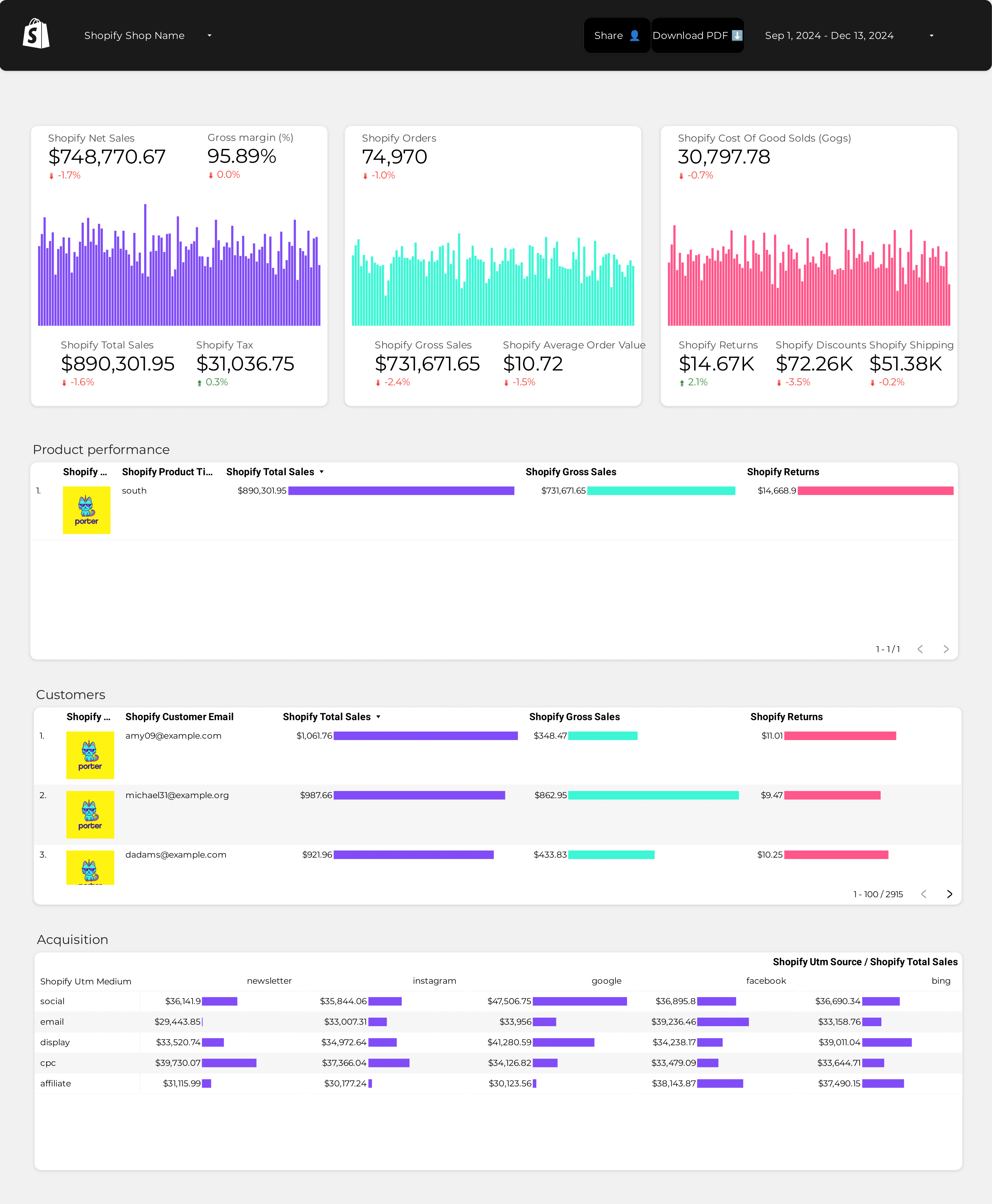
CRM dashboard example
This CRM dashboard example tracks key metrics like conversion rate, cost per acquisition, and ROI. Analyze demographic, geographic, and psychographic data. Measure sales cycle length and average deal size. Ideal for B2B and email marketing teams to consolidate CRM contact insights and refine actionable strategies.


















